That fact about nicotine led me on a mission to uncover what truly keeps us smoking—and more importantly, how to quit for good.
As a psychologist, I did what I do best: I dove into research, analyzing what actually makes us smoke, why quitting feels so hard, and how to truly break free without struggle or relapse.
I spent months studying addiction psychology, speaking with smokers who had quit, those who were still struggling, and even those who had relapsed years after quitting. I talked to doctors, researchers, and fellow behavioral scientists.
And that’s when a pattern emerged.
What I discovered, is that every smoker who successfully quit for good—without deprivation or willpower—went through 4 mental and behavioral phases.
And every smoker who struggled or relapsed never completed these 4 steps.
That’s when I realized something that changed everything:
Smoking isn’t a nicotine problem. It’s a mental and behavioral problem.
It wasn’t about fighting cravings. It wasn’t about replacing nicotine. It was about reprogramming the way smoking is wired into the mind.
Once I understood this, I went through these 4 stages myself and I was able to quit easily—without cravings (yes, no cravings), without willpower, and without missing cigarettes.
From this discovery, I developed a method based on cognitive behavioral science to help other smokers go through these 4 stages and quit permanently. (It’s called the CBQ Method—more on this in a bit.)
It turns out that quitting smoking can be really, really easy once you do it in the right way.
So it quickly became my mission to help others do the same.
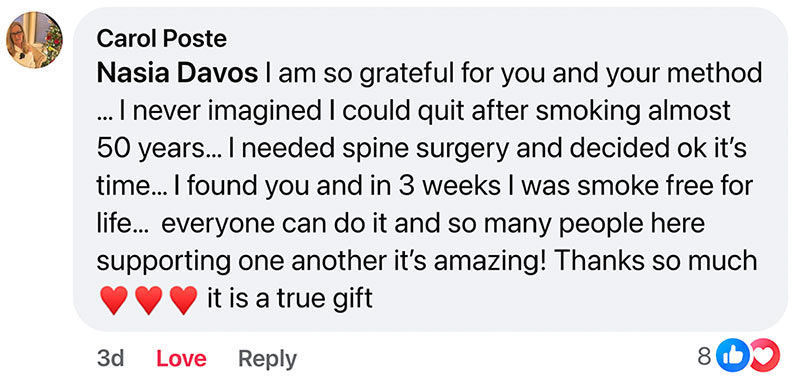
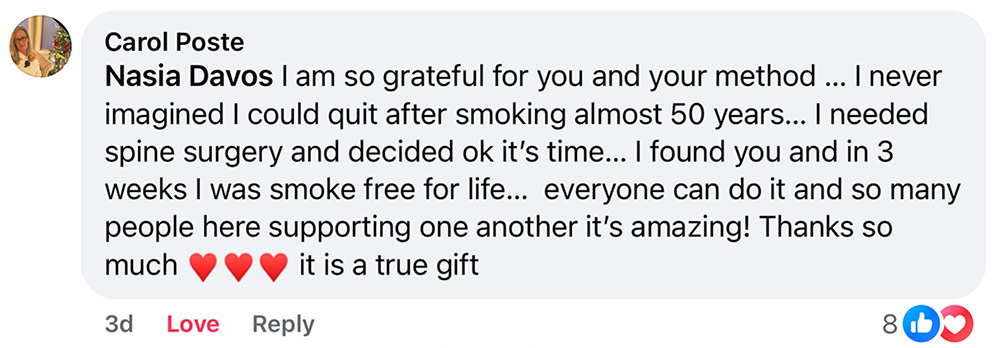
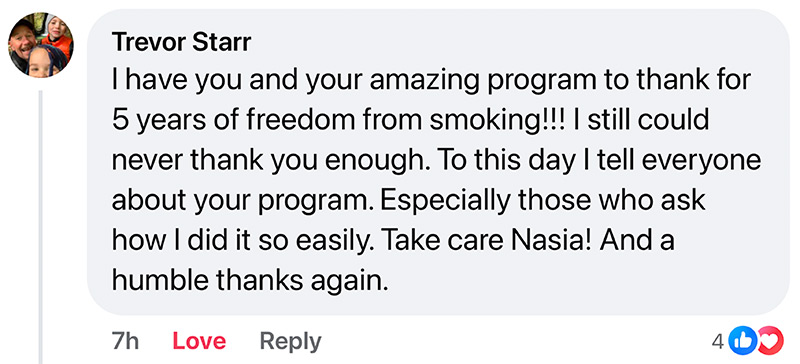

And over the last decade, I have perfected this 4-step method that allowed me to help over 261,137 smokers succeed.
It’s been featured and recognized for helping even the most addicted smokers break free on:












…and many more!
This method has also been selected by VeryWell Mind as the #1 best natural method to stop smoking and has won the Wellbeing Program Specialist of the Year Award for the last three years in a row.
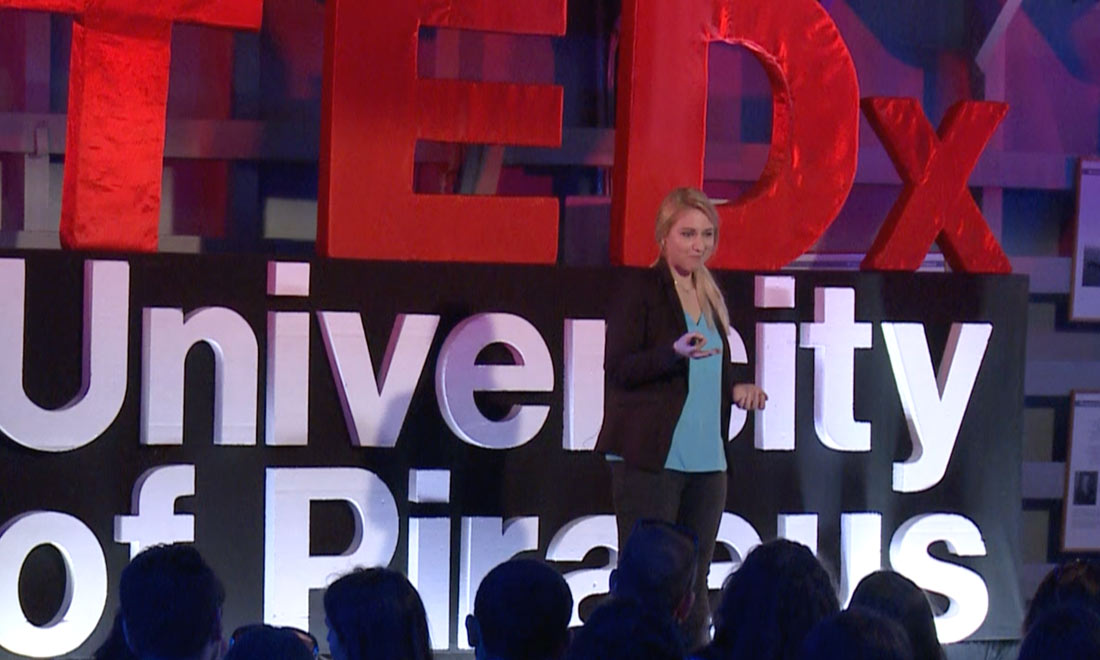
(Here’s a photo from my 2016 Ted Talk, viewed over 800,000 times, where I demonstrated my method to becoming a happy non-smoker)
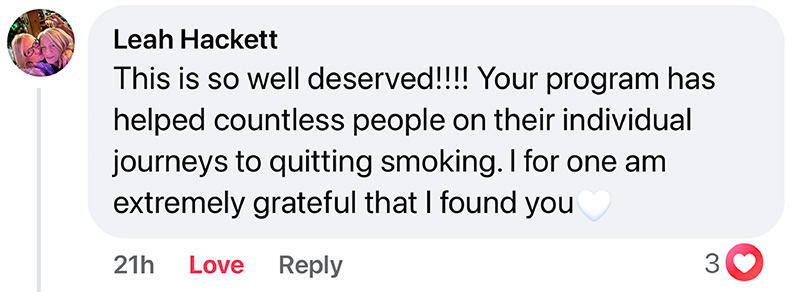

But I didn’t always know the secret to becoming a happy non-smoker. It was only after spending months researching and interviewing deprived ex-smokers and happy ex-smokers that I realized most people—including me—were trying to quit the wrong way!
The Right Way To Quit Smoking (That Big Tobacco Doesn’t Want You To Know)
Big Tobacco and the quit-smoking industry WANT you to believe smoking is a physical addiction.
But the truth is that smoking is only 10% a physical addiction and 90% mental and behavioral.
So the reason you constantly feel the urge to smoke, have intense cravings, or find it impossible to quit is because your mental and behavioral dependence are still active.
Lets break this down…
1. Cognitive Addiction (Mental Dependence)
This is the psychological grip smoking has on you—the deep-rooted beliefs, emotions, and thought patterns that make cigarettes feel essential in your life.
Maybe you believe smoking helps you cope with stress, boredom, or difficult emotions. Maybe you enjoy the ritual—the flick of the lighter, the deep inhale, the moment of escape.
Or maybe, despite hating smoking, you still feel like you need “just one more” to feel normal.
That’s the mental dependence.
It’s what makes you miss cigarettes and feel those overwhelming cravings, even when your body doesn’t physically need nicotine anymore.
2. Behavioral Addiction (Habit Dependence)
This is the automatic, unconscious part of smoking—the when and how you smoke.
You don’t just smoke. You smoke with your morning coffee, after meals, during work breaks, while driving, while drinking, while socializing.
Over time, smoking weaves itself into every aspect of your life—the highs, the lows, the in-between moments.
Without realizing it, you trained your brain to expect a cigarette when you:
Now, all these moments and situations have become triggers—reminding you to smoke and making you feel like life would be incomplete without it.
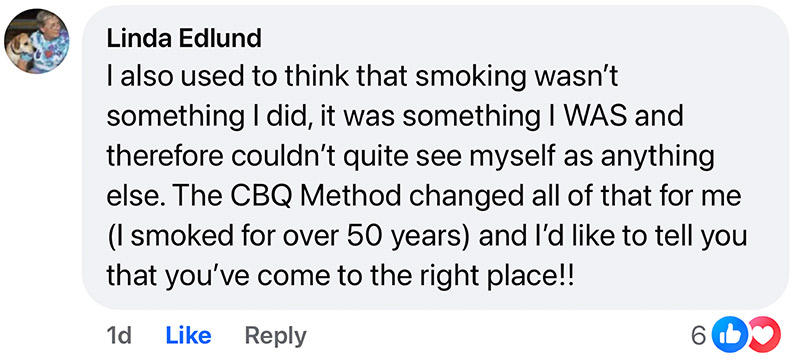
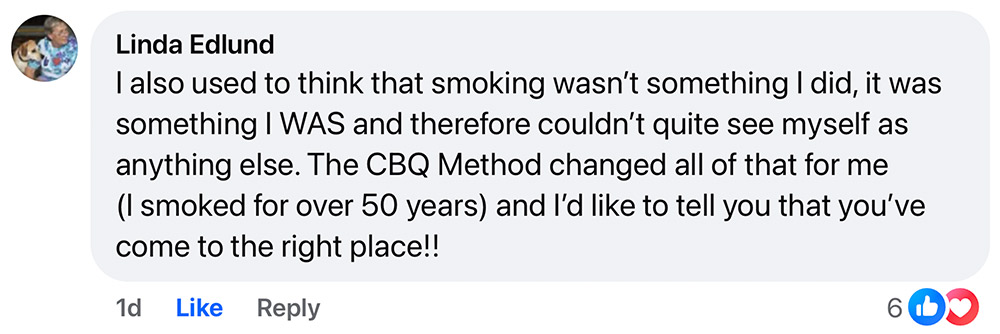
Once you break the mental and the behavioral ties, you simply don’t want, need, or reach for a cigarette anymore — you’re truly free.
The good thing about addictions is that we’re not born with them. They are learned. You programmed your mind to rely on smoking as an inseparable part of your life.
But you can unlearn that program, and reclaim your mind and your freedom.
And that’s exactly what the method I developed, which I call the CBQ Method, is designed to do: reprogram your mind back to that of a non-smoker.
Continue to Part 3 (3/3)How to Reprogram Your Mind To Quit Smoking


